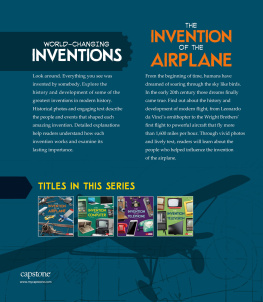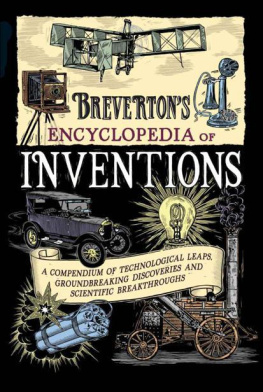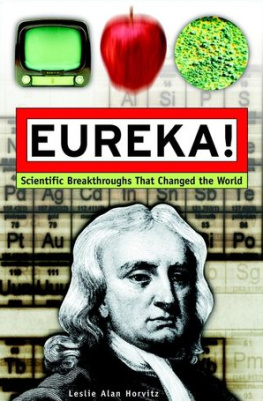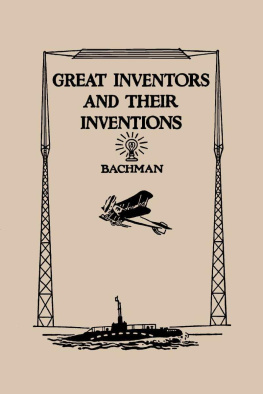

Copyright 2015 Gavin Weightman
All rights reserved. This book may not be reproduced in whole or in part, in any form (beyond that copying permitted by Sections 107 and 108 of the U.S. Copyright Law and except by reviewers for the public press) without written permission from the publishers.
For information about this and other Yale University Press publications, please contact:
U.S. Office:
Europe Office:
Typeset in Adobe Caslon Pro by IDSUK (DataConnection) Ltd
Printed in Great Britain by TJ International Ltd, Padstow, Cornwall
Library of Congress Cataloging-in-Publication Data
Weightman, Gavin.
Eureka : how invention happens / Gavin Weightman.
pages cm
ISBN 978-0-300-19208-7 (cloth : alkaline paper)
1. InventionsHistory. 2. Discoveries in scienceHistory. 3. Technological innovationsHistory. 4. Creative ability in technologyHistory. 5. InventorsBiography. I. Title.
T49.5.W45 2015
600dc23
2015007461
A catalogue record for this book is available from the British Library.
10 9 8 7 6 5 4 3 2 1
CONTENTS
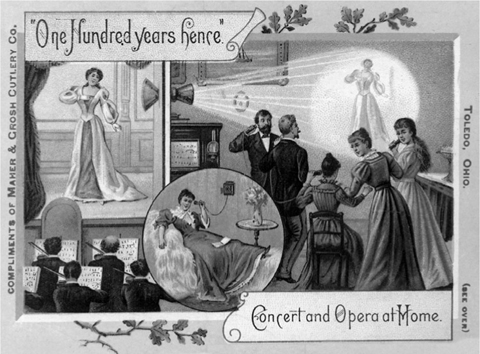
1. Modern inventions are often anticipated long before the technology evolves to turn fantasy intoreality. This American trade card advertising a penknife dates from the 1890s when the wonders of the telephone suggested that one day it would be possible to send pictures down a wire as well. Television arrived sooner than anticipated: not a century later but less than thirty years.
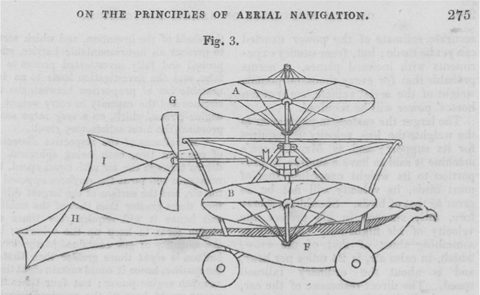
2. One of the more ambitious designs in 1843 by the pioneer of aeronautics the Yorkshire baronet Sir George Cayley. As the Wright brothers acknowledged Cayley had worked out the principles of winged flight a century before they were able to take to the air in a powered flyer.
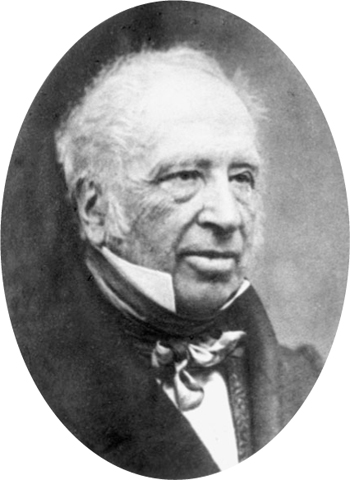
3. The only known photograph of Sir George Cayley taken in 1844 when he was 71. In the era of the hot air balloon Cayley risked ridicule for his conviction that heavier-than-air flight was possible.
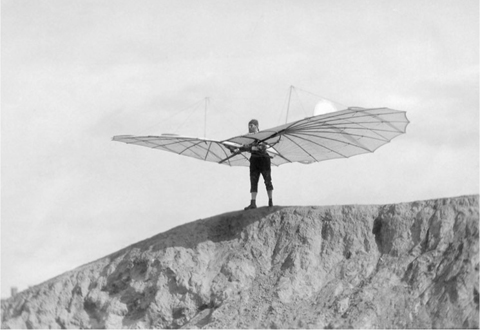
4. A dramatic photograph taken in 1894 of the German Otto Lilienthal preparing to launch himself on one of his many experimental flights. It was the tragic death of this fearless pioneer aviator that inspired the Wright brothers to continue with the quest to fly. They regarded Lilienthal as a great man.
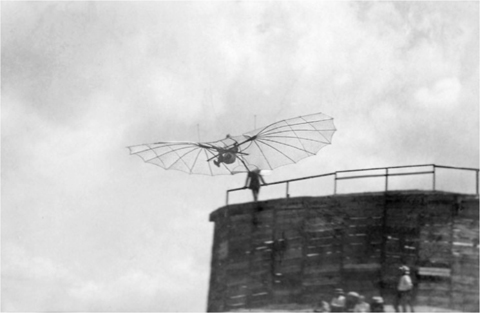
5. Lilienthal taking off in 1893 from a structure he built for his test flights. The following year he created his famous Fliegerberg or Flyers Hill where he would entertain crowds and promote the sport of gliding. He attempted to steer and keep his balance by swinging his legs and his body from side to side but he never got real stability in the air.
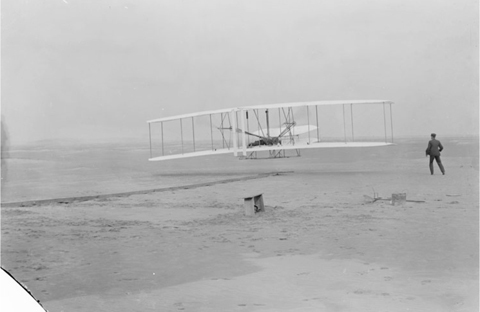
6. Unique in the history of invention, a eureka moment captured on film. Orville Wright takes to the air on the 17 December 1903 at Kitty Hawk on the remote coast of North Carolina. Orvilles older brother Wilbur is alongside the powered flyer which was airborne for only a few seconds. John T. Daniels, a surfman from the nearby life-saving station took the picture.

7. The Wright brothers could not have become the first to fly without the help of the people of Kitty Hawk. It was a letter from Bill Tate, who ran the Post Office with his wife Addie, that convinced Wilbur Wright Kitty Hawk was the ideal testing ground. When Wilbur first arrived the Tates put him up and fed him. Addie is seated with one of their daughters who had dresses made from the wing cloth of an abandoned glider.
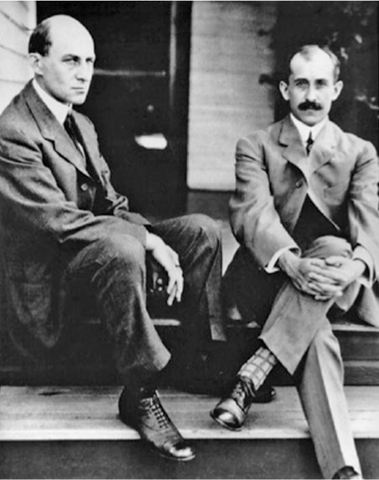
8. The Wright brothers on the porch of their home in Dayton, Ohio in 1909 when they were at the height of their fame in both America and Europe. Wilbur (on the left) was four years older than Orville but their father described them as like twins. They were always dapper dressers and charming in company but neither married and there is no record of any relationship with women. Three years after this photograph was taken Wilbur died at the age of 45.
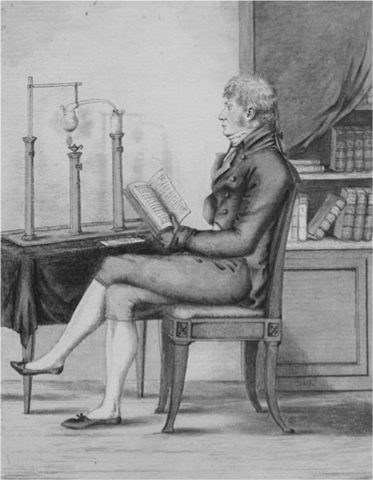
9. A rare portrait of the Swedish chemist Jons Jacob Berzelius who, in 1817, identified a new element which he called selenium, meaning of the moon. One of his trusted pieces of equipment, used for analysing rock samples, was a blow pipe, which was used to produce intense heat from a candle flame. Long after his death it was found that selenium was sensitive to light and it provided the first breakthrough in the creation of television.
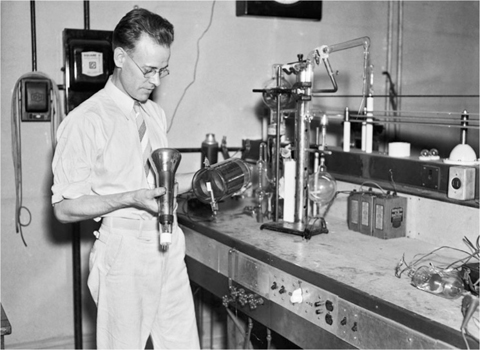
10. Often described in America as the farm boy who invented television Philo Farnsworth is pictured here with his image dissector. Though he had only minimal scientific training, Farnsworth had an ambition to be the first to invent all electronic television. He had considerable success but failed in the end to beat the big corporations who he accused of stealing his technology.
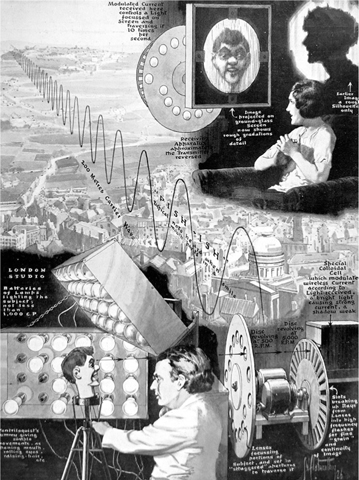
11. A graphic artists attempt to illustrate the working of John Logie Bairds semi-mechanical television system. Published in The Sphere in 1926, a year after Baird first managed to transmit an image in his workshop in Soho, the newspaper covered the story of a broadcast from London to Harrow nine miles away. The image being sent is of Stooky Bill.
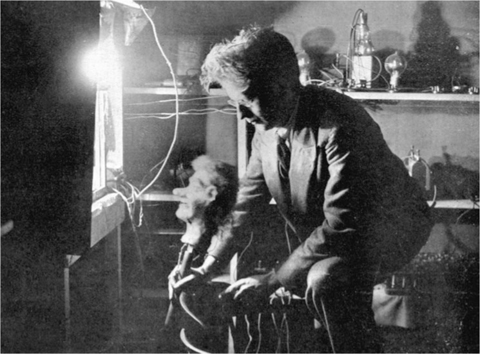
12. Bairds ramshackle television technology required a very bright, intense light to register an image and in the early days only a dummys head could withstand the heat. Stooky Bill, as the dummy was christened, played his part. Baird realised he had made a breakthrough when the features of Stookys face appeared on screen for the first time in October 1925. This was Bairds eureka moment.
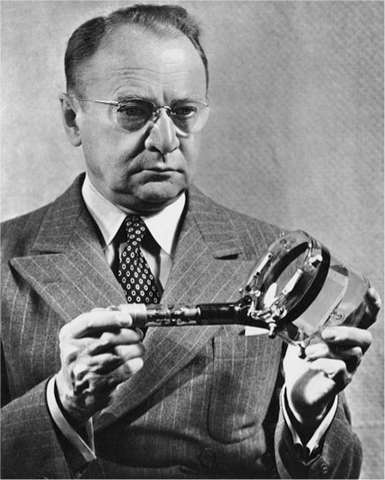
Next page




